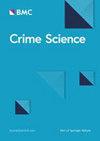学习对时空事件热点进行排序
IF 3.1
Q1 CRIMINOLOGY & PENOLOGY
引用次数: 0
摘要
背景犯罪、交通事故、恐怖袭击和其他时空随机事件在空间和时间上分布不均。就犯罪而言,热点和其他前瞻性警务计划旨在将有限的资源集中用于城市中风险最高的犯罪和社会危害热点。实施这些战略的关键步骤是构建用于对空间热点进行排序的评分模型。虽然这些方法是通过区域归一化 Recall@k(称为预测准确性指数)来评估的,但模型通常是通过最大似然法或经验法则来训练的,而这些法则可能不会优先考虑前 k 个热点的模型准确性。此外,目前的算法是在固定网格上定义的,无法捕捉到发生在社区和具有复杂几何形状的道路网络上的风险模式。结果 我们介绍了犯罪排名(CrimeRank),这是一种用于确定犯罪热点地图的学习排名提升算法,可直接优化排名靠前的热点所占的犯罪比例。该方法采用浮动网格与贪婪热点选择算法相结合的方式,可准确捕捉复杂几何图形中的空间风险。我们使用印第安纳波利斯大都会警察局提供的犯罪和交通事故数据、伊拉克的简易爆炸装置袭击以及 2017 年 NIJ 实时犯罪预测挑战赛的数据来说明该方法的性能。结论 我们的学习排名策略是 2017 年挑战赛中表现最佳的解决方案(PAI 指标)。我们的研究表明,如果通过取消网格单元必须是规则细分网格的限制来放宽竞赛规则,CrimeRank 将获得更大的收益。本文章由计算机程序翻译,如有差异,请以英文原文为准。
Learning to rank spatio-temporal event hotspots
Background Crime, traffic accidents, terrorist attacks, and other space-time random events are unevenly distributed in space and time. In the case of crime, hotspot and other proactive policing programs aim to focus limited resources at the highest risk crime and social harm hotspots in a city. A crucial step in the implementation of these strategies is the construction of scoring models used to rank spatial hotspots. While these methods are evaluated by area normalized Recall@k (called the predictive accuracy index), models are typically trained via maximum likelihood or rules of thumb that may not prioritize model accuracy in the top k hotspots. Furthermore, current algorithms are defined on fixed grids that fail to capture risk patterns occurring in neighborhoods and on road networks with complex geometries. Results We introduce CrimeRank, a learning to rank boosting algorithm for determining a crime hotspot map that directly optimizes the percentage of crime captured by the top ranked hotspots. The method employs a floating grid combined with a greedy hotspot selection algorithm for accurately capturing spatial risk in complex geometries. We illustrate the performance using crime and traffic incident data provided by the Indianapolis Metropolitan Police Department, IED attacks in Iraq, and data from the 2017 NIJ Real-time crime forecasting challenge. Conclusion Our learning to rank strategy was the top performing solution (PAI metric) in the 2017 challenge. We show that CrimeRank achieves even greater gains when the competition rules are relaxed by removing the constraint that grid cells be a regular tessellation.
求助全文
通过发布文献求助,成功后即可免费获取论文全文。
去求助
来源期刊

Crime Science
Social Sciences-Cultural Studies
CiteScore
11.90
自引率
8.20%
发文量
12
审稿时长
13 weeks
期刊介绍:
Crime Science is an international, interdisciplinary, peer-reviewed journal with an applied focus. The journal''s main focus is on research articles and systematic reviews that reflect the growing cooperation among a variety of fields, including environmental criminology, economics, engineering, geography, public health, psychology, statistics and urban planning, on improving the detection, prevention and understanding of crime and disorder. Crime Science will publish theoretical articles that are relevant to the field, for example, approaches that integrate theories from different disciplines. The goal of the journal is to broaden the scientific base for the understanding, analysis and control of crime and disorder. It is aimed at researchers, practitioners and policy-makers with an interest in crime reduction. It will also publish short contributions on timely topics including crime patterns, technological advances for detection and prevention, and analytical techniques, and on the crime reduction applications of research from a wide range of fields. Crime Science publishes research articles, systematic reviews, short contributions and theoretical articles. While Crime Science uses the APA reference style, the journal welcomes submissions using alternative reference styles on a case-by-case basis.
 求助内容:
求助内容: 应助结果提醒方式:
应助结果提醒方式:


